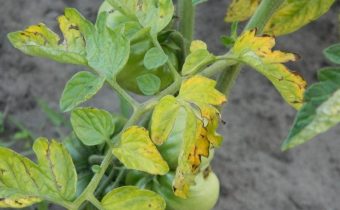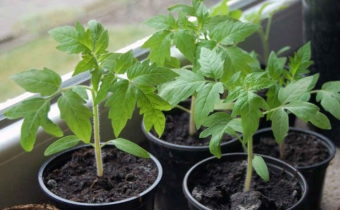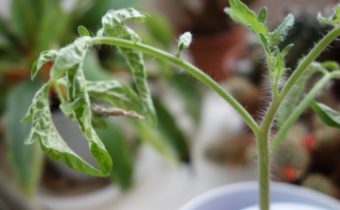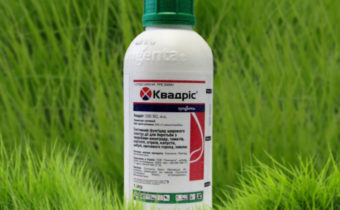How to overcome the curly leaves of tomatoes?
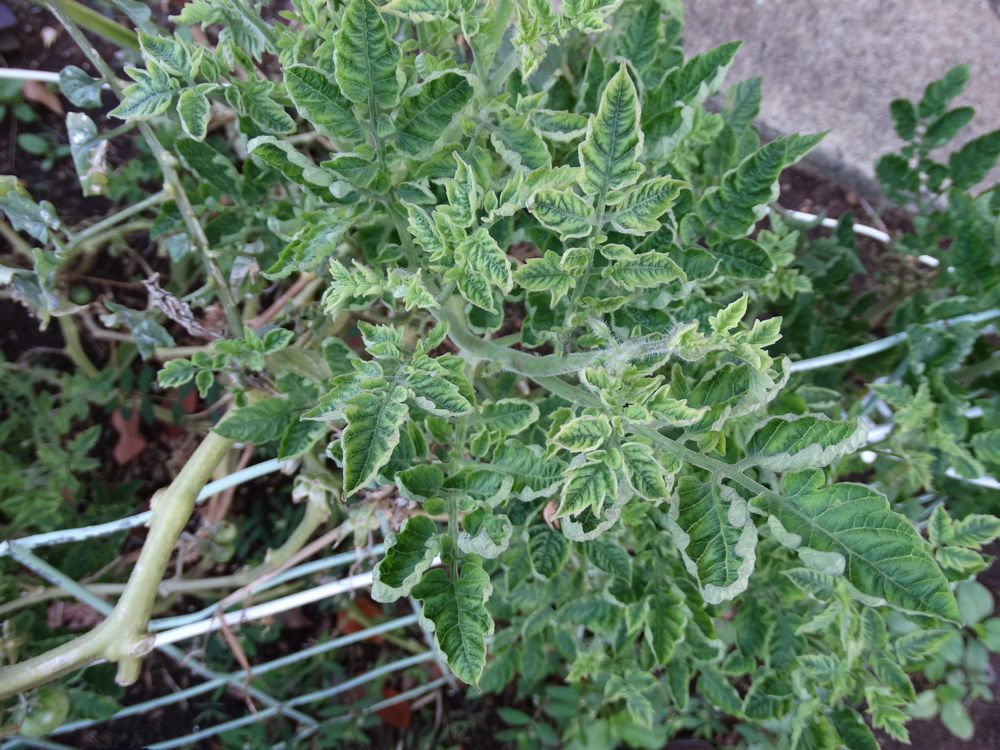
When growing tomatoes one often comes across various diseases. One of the most serious is considered leaf curl. At the heart of the disease is a virus that infects the leaves, and then the fruit. Curliness is a dangerous infection that can ruin the entire crop if treatment measures are not taken.
Description and main features
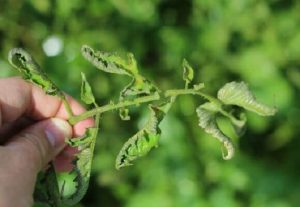 The virus lives in the ground or on infected plants. With warming, it becomes more active and begins to seize new territories, infecting neighboring plants. The brightest sign that a tomato has become infected is a change in color and twisted edges of the leaves. In addition to clearly visible symptoms, the growth and development of tomatoes slows down.
The virus lives in the ground or on infected plants. With warming, it becomes more active and begins to seize new territories, infecting neighboring plants. The brightest sign that a tomato has become infected is a change in color and twisted edges of the leaves. In addition to clearly visible symptoms, the growth and development of tomatoes slows down.
Chlorotic curliness
Distinctive features are:
- a change in the color of the tomato tops (the edges of the leaves become lighter than the center);
- curling and twisting the leaves;
- the bush stops growing;
- the green mass is much shallower, the shoots are exposed.
The cause of the disease may be the lack of disinfection of seeds and tools before planting. Chlorotic curliness is carried by insects, such as the greenhouse whitefly. Therefore, if tomatoes have not been treated with insecticides for the entire growing period, they also fall into the risk zone of infection.
Processing of tomatoes is carried out in 2 weeks after transplantation in an open ground or greenhouse.
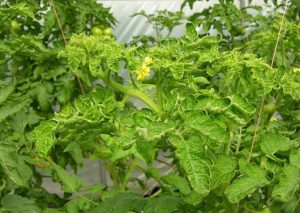 If signs of curl have already appeared on the shoots, the only effective method of treatment is to dig them out of the ground. The diseased plant is extracted with part of the soil and burned. After removing the infected shrub, foliar treatment of the remaining healthy plants is carried out with a 1% solution of Bordeaux mixture or copper sulphate. The treatment must be repeated after 7-10 days.
If signs of curl have already appeared on the shoots, the only effective method of treatment is to dig them out of the ground. The diseased plant is extracted with part of the soil and burned. After removing the infected shrub, foliar treatment of the remaining healthy plants is carried out with a 1% solution of Bordeaux mixture or copper sulphate. The treatment must be repeated after 7-10 days.
The following recommendations are used as preventive measures to combat chlorotic curliness:
- preliminary disinfection of seeds with potassium permanganate;
- processing of garden tools with ethyl alcohol before planting;
- moderate watering of tomatoes, especially immediately after transplantation;
- insect control in the area.
Yellow Curly
Infection by the yellow curly virus completely impedes the fruiting of tomatoes. The flowers begin to fall off from the shoots in large quantities, and the fruits are poorly tied. Symptoms of the disease are as follows:
- deformation of the leaf structure, its fabric becomes wrinkled and fades;
- leaves take a bowl shape;
- immature flowers almost immediately fall off.
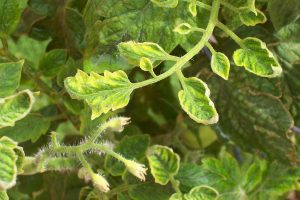 The virus is transmitted from neighboring solanaceous cultures with insects. Most often, its carrier is considered the cotton whitefly. Without insects, infection from neighboring plants is almost impossible, the virus is not transmitted mechanically (with wind or rain).
The virus is transmitted from neighboring solanaceous cultures with insects. Most often, its carrier is considered the cotton whitefly. Without insects, infection from neighboring plants is almost impossible, the virus is not transmitted mechanically (with wind or rain).
As with the previous species, the only method of control was the removal of a part of the soil of an infected plant. Remove the diseased bush from the ground along with the rhizome and discard. Healthy shoots irrigated with a solution of potassium permanganate pink. Potassium permanganate has a bactericidal effect and protects tomatoes from possible contamination.
In no case can not use infected tomato bushes to form compost.
To avoid having to deal with the yellow curly virus, it is recommended that vegetable crops be treated with insecticides in a timely manner. Insecticides are used according to the instructions, which is given on the packaging of the drug. The optimal time is at the end of spring and the beginning of summer, at this time insects are particularly active and can infect bushes. You can use folk remedies in the fight against whitefly and kinky. You will need:
- Husk from 3-4 bulbs;
- 5 drops of iodine;
- 3 liters of water.
Water is boiled and steamed onion peel. When the mixture has cooled down, iodine is added to it and young tomato shoots are sprayed with the resulting solution. A strong smell will scare away insects, and iodine prevents the development of a viral infection.
Apex Curl
The carrier of this group of viruses are insects - beet cyclists. The insect implants a dangerous disease on the leaves and stem. Soon, a few days after infection, some signs begin to appear:
- stunted plant species;
- a large thickness of the leaves, twisting the edges;
- leaf mutation occurs predominantly only in the upper part;
- pale coloring.
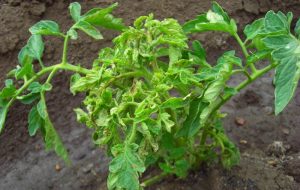 Infected shoots cannot be treated. To save the rest of the harvest, diseased bushes are dug and burned. The surviving plants are treated with blue vitriol, spraying the solution evenly over all the shoots. To consolidate the effect, the treatment should be repeated after 10 days.
Infected shoots cannot be treated. To save the rest of the harvest, diseased bushes are dug and burned. The surviving plants are treated with blue vitriol, spraying the solution evenly over all the shoots. To consolidate the effect, the treatment should be repeated after 10 days.
Prevention of curl apex is aimed at the destruction of insects, in particular tsikadok. Insecticides of a wide spectrum of action can be used, they lead to the death of pests, thereby reducing the chance of developing the disease. Excess moisture in the soil can also trigger the development of the disease, so they do not abuse irrigation, and in greenhouse cultivation, doors and air vents are open for the day to normalize air circulation.
General recommendations
In order to reduce the risk of virus infection, in addition to the above means, the following preventive measures are used:
- Change location of cultivation. It is not necessary to grow tomatoes from one year to the same place, the beds should be swapped, but the soil before planting is shed with a weak solution of potassium permanganate before planting.
- Observe the landing distance. The minimum distance between adjacent bushes should not be less than half a meter.
- Loosening and weeding the soil from weeds.
- Planting garlic, onions next to the tomatoes. Because of the strong smell of insects will not attack tomatoes.
If curliness is detected, treatment measures should be taken as early as possible. A virus at a warm temperature and in humid conditions infects healthy plants at high speed, and every day the chance of salvation is reduced. To avoid having to deal with the infection, they necessarily resort to preventive actions and monitor the condition of the seedlings every day, especially in the first half of summer.


